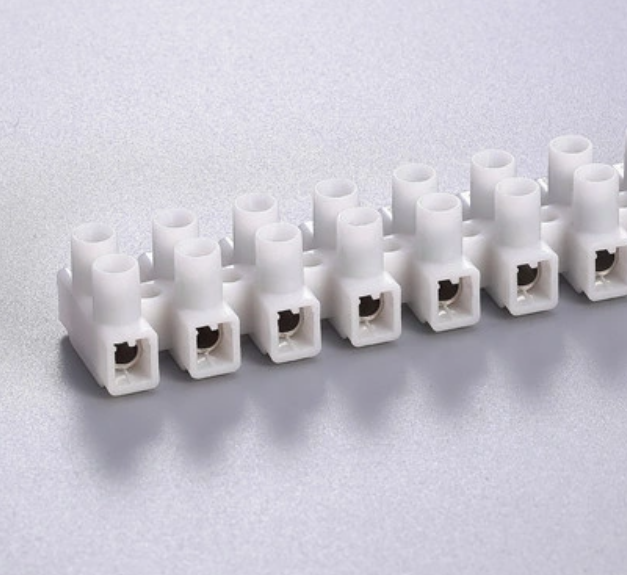The Future of Terminal Blocks: Progress, Trends and Innovations
2023-05-05
Terminal Blocks have come a long way since their invention in the early 20th century. Today, these simple but essential components are used in a wide range of industries and applications, from automotive and aerospace to industrial machinery and building automation. But as technology continues to evolve, what does the future hold for terminal blocks? Here are some of the advancements, trends and innovations shaping the future of these key connectors:  1. Miniaturization As devices and equipment become smaller and more compact, there is an increasing need for terminal blocks that can accommodate tighter spaces and higher density connections. Miniature terminal blocks are gaining popularity in applications such as portable equipment, medical equipment, and IoT devices. These miniature terminal blocks are usually designed in SMT (Surface Mount Technology) with a pitch as small as 2.5 mm and a height as small as 3.5 mm. They also feature high current and high voltage capabilities, and various configurations such as wire-to-board, board-to-board, and wire-to-wire. 2. Connection and integration The rise of Industry 4.0 and the Internet of Things (IoT) has led to an increased demand for terminal blocks that provide intelligent connectivity and integration. Smart terminal blocks can provide built-in electronics such as sensors, RFID and network connectivity to monitor and control every aspect of the connected system. This integration provides increased flexibility, efficiency and safety, which are critical in modern automation and control systems. In addition, such smart terminal blocks can provide real-time diagnostics and analysis, predictive maintenance and remote access capabilities. 3. Customization and Modularization Another trend in the terminal blocks industry is the increasing demand for customization and modularity. As applications become more specialized and complex, terminal blocks need to be designed to meet specific requirements such as voltage, current, temperature and environment. Customization and modularity allow greater flexibility and versatility when designing and configuring terminal blocks. For example, some terminal blocks are now designed with modular components that can be easily added or removed as the application requires. This modular terminal block can also be assembled quickly, saving time and reducing costs. 4. Security and Compliance As electrical systems become more complex and sophisticated, safety and compliance become increasingly important, especially in industries such as aerospace, transportation and medical. Terminal blocks need to comply with various safety and performance standards such as UL, IEC and RoHS. One of the latest innovations in this field is the use of materials that can withstand harsh environments such as heat, humidity and chemical exposure. These materials include thermosets, thermoplastics and ceramics. in conclusion The future is bright for terminal blocks, with many advancements, trends and innovations shaping their development. As devices and equipment become smaller and more connected, terminal blocks need to be designed with compatibility, intelligence and flexibility in mind. By keeping abreast of these trends and advancements, terminal block manufacturers can continue to provide reliable, efficient and safe solutions for a variety of industries and applications.
1. Miniaturization As devices and equipment become smaller and more compact, there is an increasing need for terminal blocks that can accommodate tighter spaces and higher density connections. Miniature terminal blocks are gaining popularity in applications such as portable equipment, medical equipment, and IoT devices. These miniature terminal blocks are usually designed in SMT (Surface Mount Technology) with a pitch as small as 2.5 mm and a height as small as 3.5 mm. They also feature high current and high voltage capabilities, and various configurations such as wire-to-board, board-to-board, and wire-to-wire. 2. Connection and integration The rise of Industry 4.0 and the Internet of Things (IoT) has led to an increased demand for terminal blocks that provide intelligent connectivity and integration. Smart terminal blocks can provide built-in electronics such as sensors, RFID and network connectivity to monitor and control every aspect of the connected system. This integration provides increased flexibility, efficiency and safety, which are critical in modern automation and control systems. In addition, such smart terminal blocks can provide real-time diagnostics and analysis, predictive maintenance and remote access capabilities. 3. Customization and Modularization Another trend in the terminal blocks industry is the increasing demand for customization and modularity. As applications become more specialized and complex, terminal blocks need to be designed to meet specific requirements such as voltage, current, temperature and environment. Customization and modularity allow greater flexibility and versatility when designing and configuring terminal blocks. For example, some terminal blocks are now designed with modular components that can be easily added or removed as the application requires. This modular terminal block can also be assembled quickly, saving time and reducing costs. 4. Security and Compliance As electrical systems become more complex and sophisticated, safety and compliance become increasingly important, especially in industries such as aerospace, transportation and medical. Terminal blocks need to comply with various safety and performance standards such as UL, IEC and RoHS. One of the latest innovations in this field is the use of materials that can withstand harsh environments such as heat, humidity and chemical exposure. These materials include thermosets, thermoplastics and ceramics. in conclusion The future is bright for terminal blocks, with many advancements, trends and innovations shaping their development. As devices and equipment become smaller and more connected, terminal blocks need to be designed with compatibility, intelligence and flexibility in mind. By keeping abreast of these trends and advancements, terminal block manufacturers can continue to provide reliable, efficient and safe solutions for a variety of industries and applications.



